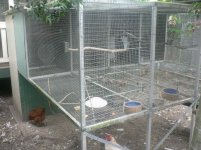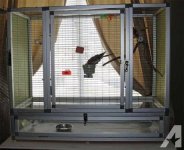Hey everyone, I'm looking to build an indoor aviary for my Congo African Grey. I'm planning to make it 7 feet tall, 8 feet wide, 4 feet deep. I plan to make the frame out of untreated lumber so it won't be toxic for her, however I could use some advice on what to use for the netting/mesh.
I know Galvanized steel mesh isn't recommending because of the zinc content, though I hear I can get GAW (Galvanized after Weld) steel mesh and wash it well with vinegar to possibly negate most of the zinc issues, but if possible I"d rather avoid that all together.
Stainless steel sounds like a great option, except for the price. If someone has a good source for reasonably priced SS I would be interested.
Are there any other options? I was at my local Zoo recently (Kansas City Zoo) and noticed all the bird aviaries have what looks like maybe parachute cord mesh?
Let me know what other options I have.
Thanks
I know Galvanized steel mesh isn't recommending because of the zinc content, though I hear I can get GAW (Galvanized after Weld) steel mesh and wash it well with vinegar to possibly negate most of the zinc issues, but if possible I"d rather avoid that all together.
Stainless steel sounds like a great option, except for the price. If someone has a good source for reasonably priced SS I would be interested.
Are there any other options? I was at my local Zoo recently (Kansas City Zoo) and noticed all the bird aviaries have what looks like maybe parachute cord mesh?
Let me know what other options I have.
Thanks

